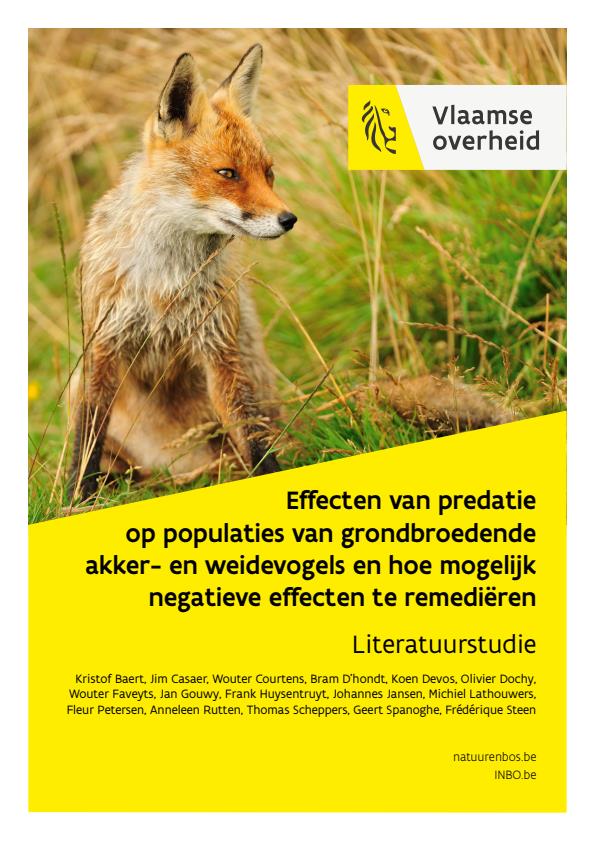Effecten van predatie op populaties van grondbroedende akker- en weidevogels en hoe mogelijk negatieve effecten te remediëren. Literatuurstudie
Predation management, including habitat management and lethal/non-lethal measures, can reduce predation pressure. The report examines the interactions between predators and Flemish ground-nesting farmland and meadow birds (partridge, corn bunting, skylark, meadow pipit, quail, lapwing, black-tailed godwit, curlew, oystercatcher and redshank), discusses their ecology and status, and the implementation of predation management.
An area-specific predation management plan with a multi-species approach is recommended. After all, effectiveness is area-specific and depends on many factors. Monitoring is crucial within an adaptive approach.
However, fundamental to the recovery of farmland and meadow birds is the restoration of their habitats through a transition in agricultural practices.
Details
| Type | Reports of Research Institute for Nature and Forest |
|---|---|
| Category | Research |
| Language | Dutch |
Bibtex
@misc{8df69618-555f-4285-af60-35a4de57fb00,
title = "Effecten van predatie op populaties van grondbroedende akker- en weidevogels en hoe mogelijk negatieve effecten te remediëren",
abstract = "In Flanders, many ground-nesting farmland and meadow bird species are showing negative population trends, as in the rest of Europe. The intensification of agriculture, with habitat loss and degradation, is the main cause, disrupting the balance between predators and prey. In addition, several predator species are making a comeback. This combination can have a limiting effect on bird populations, especially on long-lived ground-nesting birds with a single clutch that are preyed upon at all stages of life.
Predation management, including habitat management and lethal/non-lethal measures, can reduce predation pressure. The report examines the interactions between predators and Flemish ground-nesting farmland and meadow birds (partridge, corn bunting, skylark, meadow pipit, quail, lapwing, black-tailed godwit, curlew, oystercatcher and redshank), discusses their ecology and status, and the implementation of predation management.
An area-specific predation management plan with a multi-species approach is recommended. After all, effectiveness is area-specific and depends on many factors. Monitoring is crucial within an adaptive approach.
However, fundamental to the recovery of farmland and meadow birds is the restoration of their habitats through a transition in agricultural practices.",
author = "Kristof Baert and Jim Casaer and Wouter Courtens and Bram D'hondt and Koenraad Devos and Olivier Dochy and Wouter Faveyts and Jan Gouwy and Frank Huysentruyt and Johannes Jansen and Michiel Lathouwers and Fleur Petersen and Anneleen Rutten and Thomas Scheppers and Geert Spanoghe and Frédérique Steen",
year = "2025",
month = jan,
day = "01",
doi = "https://doi.org/10.21436/inbor.123364107",
language = "English",
publisher = "Instituut voor Natuur- en Bosonderzoek",
address = "Belgium,
type = "Other"
}

